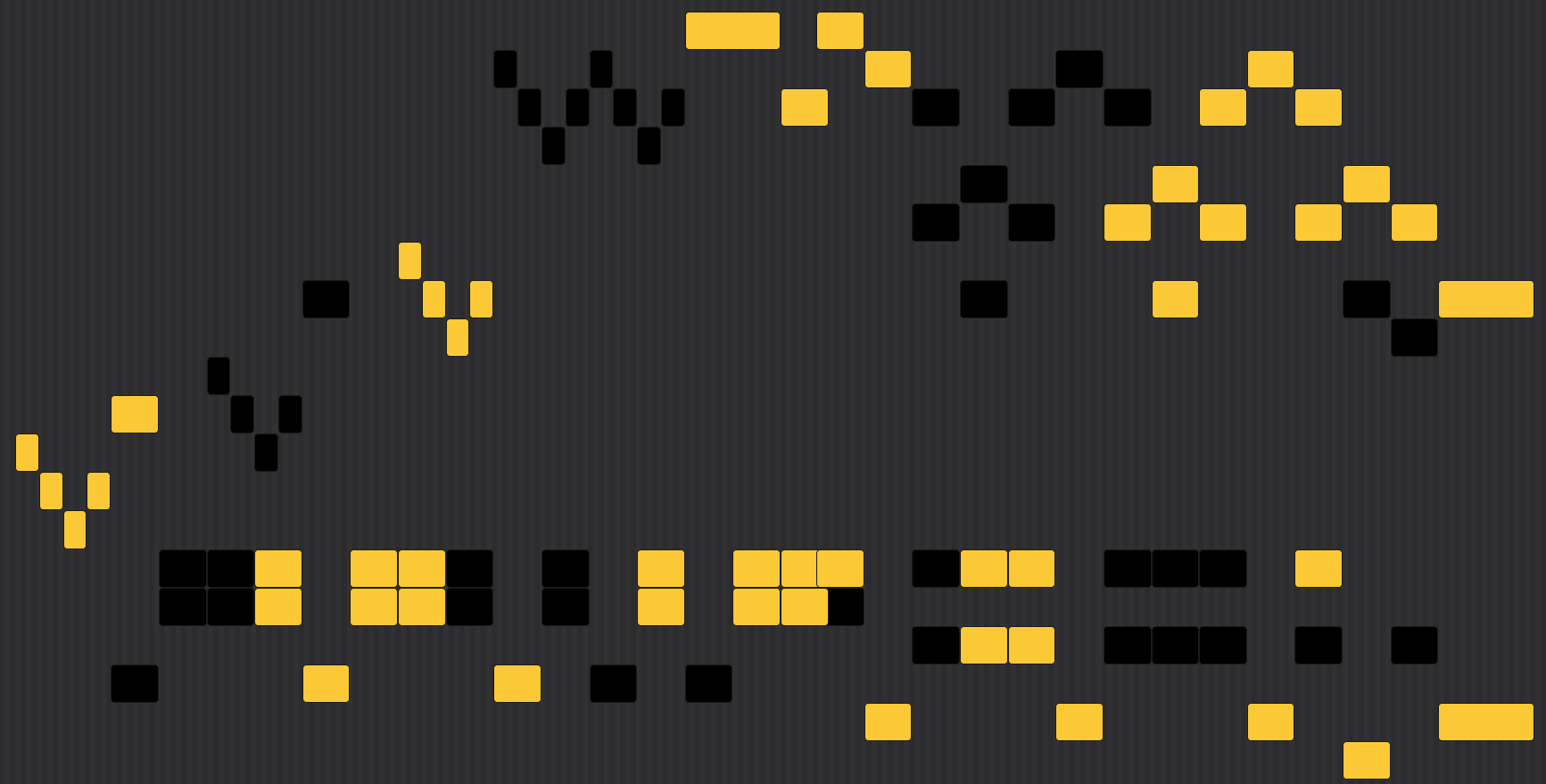Blackout music: Create new music by erasing old music

I've always been a fan of erasure as art. Some of my favorite examples include Tracy K. Smith's erasure of the Declaration of Independence for her poem Declaration, Jenny Holzer's screenprinting of redacted and declassified U.S. Government documents, and Alexandra Bell's edits to the front pages of the New York Times.
In that spirit, I was interested in applying the deceptively simple technique of erasure to music. I started with sheet music since musical compositions as sheet music (i.e. not recorded music) published before 1930 (as of this writing in 2025) are in the public domain. Also, the concept of "erasure" makes intuitive sense for sheet music, where you can simply blackout notes you want to remove.
(For those who want to skip the long description, you can view the demo here and check out the tool here.)
My hypothesis was that you can start with a highly recognizable song and remove notes until it is unrecognizable/new. The goal was similar to many of my other creative tools: mine old music for building blocks to create new music. Here's my process for this one:
- Identify a bunch of well-known solo piano pieces that are in the public domain, such as Beethoven's Für Elise or Debussy's Clair de lune. I decided on solo pieces (rather than ensemble pieces) to allow for a simpler interface. And I thought piano pieces (rather than string or vocal pieces) would translate well into modern digital musicmaking tools such as synthesizers due to their shorter and more articulated notes.
- In order to "play" the sheet music, I needed them in a digital and playable format. MIDI was the obvious choice since it's industry standard and there's lots of software that converts music to and from sheet music and MIDI. So I found MIDI files for each of the pieces. I listed the sources in a README.
- I used Tone.js, a popular musicmaking framework for the Web, to play the MIDI files in the browser using Tone's built in synthesizers.
- Next was the interface. I debated between displaying traditional musical notation (one that's on sheet music) versus a more modern "piano roll" interface that you would find in modern DAWs. On one hand, traditional music notation is more aligned with the metaphor I'm working with (i.e. blacking out notes on sheet music). But a piano roll interface is more accessible and usable in a digital context and may be more familar to modern and casual musicmakers. I opted for a piano roll-like interface.
- For the core experience, I tried to keep things as simple as possible: select a song, play it, erase notes. Instead of replacing the notes with silence, I decided to remove the silence too, thus "collapsing" the notes together. This results in a more transformative output since the original song's structure and cadence breaks down as more notes are removed.
- I added a few other features for fun and convenience: the ability to load your own MIDI files, download an edited song as a MIDI file, randomize blacked-out notes, and ajusting the synthesizer sounds and speed.
Check out a demo of the final result here:
And again, here's the link to the Blackout Music tool which you can use in a Web browser (desktop or tablet recommended, may be tricky on a small screen). As always, the underlying code is free and open source. Thanks for reading!